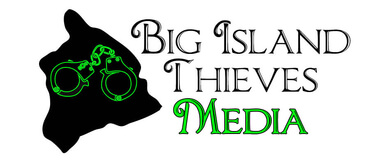100,000,000 is a hard number to wrap your head around. One trillion is even tougher and that’s the number of trees a new challenge hopes to plant, conserve, or restore this decade worldwide. https://www.1t.org/ 1t.org is part of the World Economic Forum’s efforts to accelerate nature-based solutions and was set up to support the UN Decade on Ecosystem Restoration 2021-2030.
The role of Hawai‘i was revealed today in a videotaped message from David Ige during virtual or live Global Citizen Events in New York City and Los Angeles. The One Trillion Trees Pledge is a direct approach to achieving net-negative carbon goals, a primary way of combating global warming. The events were expected to have an audience of 100 million people.
The Hawai‘i pledge is supported by the directors of the Dept. of Land and Natural Resources (DLNR), Dept. of Transportation (DOT), and the Dept. of Defense (DOD. The pledge entails planting, conserving, or restoring ten million trees each year of this decade.
DLNR is leading the pledge. Chair Suzanne Case commented, “Forest carbon projects withdraw carbon dioxide (CO2), the greenhouse gas largely responsible for global climate change, and stores it in trees or other biomass. The actions planned until the end of this decade will contribute to our net-negative carbon goal. Already we’ve seen progress. In 2017 Hawai‘i forests sequestered 2.69 metric tons of CO2 and our continuing challenge and pledge is to increase this by 2030.”
Hawai‘i already has a legacy of protecting forests and trees. Examples include:
- Hawai‘i 30X30 watershed protection goals:
https://alohachallenge.hawaii.gov/pages/nrm-02-watershed-forest-areas
https://governor.hawaii.gov/wp-content/uploads/2016/09/30×30-Watershed-Forests_FINAL.pdf
Kaulunani Urban & Community Forestry Program
DLNR’s goals will be guided by seven action areas:
- Protect existing forests
- Conserve private land through legal protections
- Plant trees to restore existing forest lands
- Plant trees to reclaim unused rural lands where forests used to exist
- Plant trees to advance agroforestry
- Plant trees in urban areas
- Facilitate natural regeneration
“We will permanently conserve 43,000 acres of forest and we will build conservation fences to protect an additional 106,816 acres from feral ungulates in our watersheds to ensure this number grows,” Case added.
Two fences, one predator-proof and the other ungulate-proof are currently under construction in the Nā Pali-Kona Forest Reserve and adjacent Kōke’e State Park. Much of the funding for the project is coming from the U.S. Department of Defense and is the first in Hawai‘i that has a predator-proof fence inside of an ungulate-proof fence.
Walking some of the completed 4 ½ foot-high ungulate fencings on Kalepa Ridge, DOFAW botanist Adam Williams explains that on nearby Honopu Ridge an additional four feet of mesh will be added to keep deer out. Ungulate fencing is meant to keep deer, pigs, and goats out. “The eight-foot-high fencing will keep deer out of the entire upper watershed,” Williams said.
Three acres of the 240 acres is also getting predator-proof fencing of a totally different design. It has a very small mesh, with a shiny hood to keep cats, rats, and mice away from seabirds.
The Hawai‘i Department of Defense has also pledged to plant more trees on properties under its jurisdiction. Gen. Kenneth S. Hara, Hawai‘i Adjutant General, said, “DOD is pledging to plant 1,200 trees annually and is proud to be a part of this global initiative.”
The key to reaching the one hundred million goals is the involvement of private partners through watershed partnerships and the DLNR forest stewardship program. Ensuring privately held forest lands are protected can be accomplished by best practices, such as natural resource management, conservation easements, or acquisition by the state. DLNR also plans to continue work with federal partners to raise funds for the purchase of priority forests to bring them into permanent conservation under state protection.



